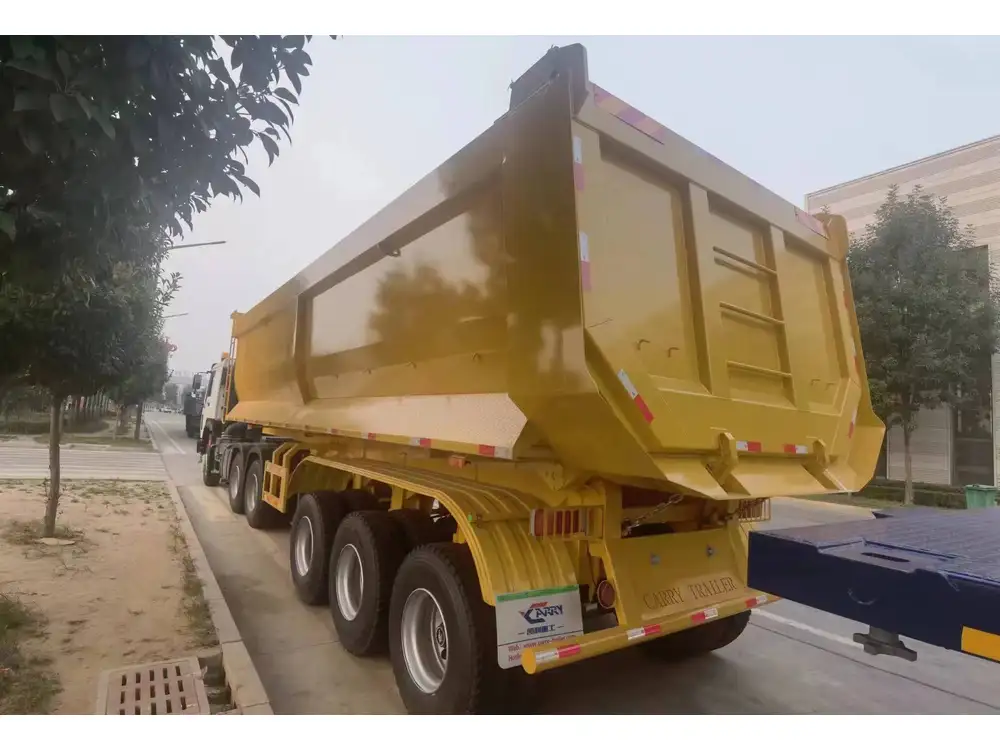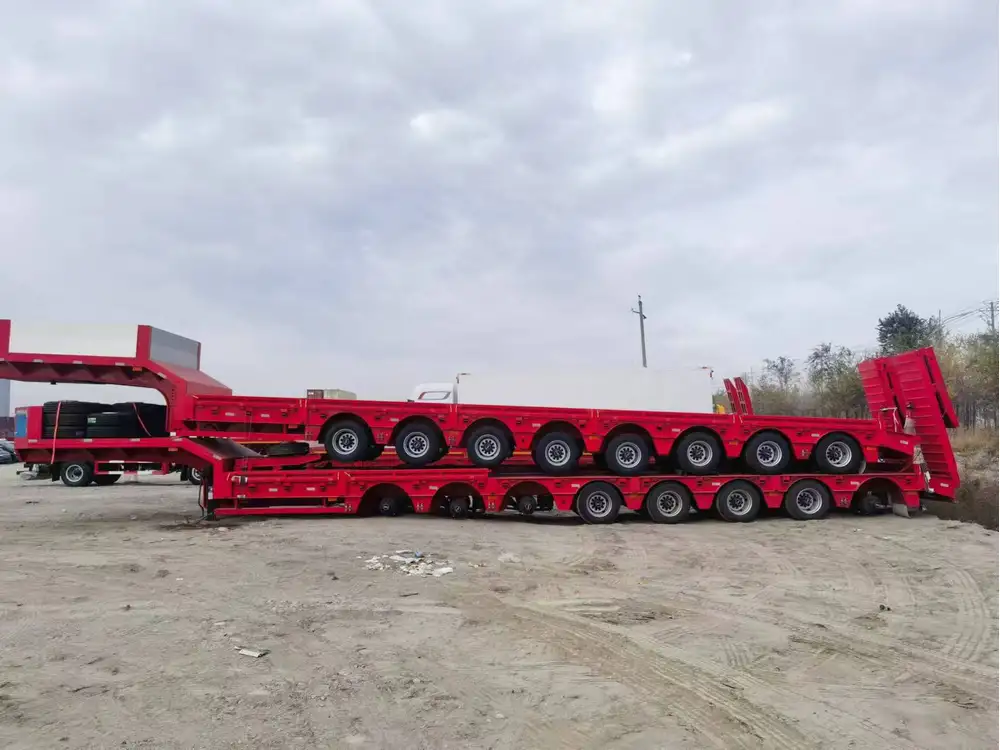In the world of freight logistics, knowing the capacity of your equipment is crucial. This article aims to dissect the logistical question: how many bushels fit in a semi-trailer? By breaking down the elements related to trailer capacities, dimensions, and best practices, we will provide extensive insights that not only assist in efficient loading but also optimize costs and improve operational efficiency.
1. Introduction to Semi-Trailers
Semi-trailers play an essential role in the shipping and transportation industry. These robust vehicles can be attached to a variety of tractor units, allowing for significant payloads to be carried across impressive distances. Before delving into the intricacies of bushel conversions and loading capacities, let’s briefly outline the types of semi-trailers common in the industry.
1.1 Types of Semi-Trailers
| Type of Semi-Trailer | Description |
|---|---|
| Flatbed | Open design, suitable for heavy materials, and wide loads. |
| Enclosed | Protects goods from environmental factors. |
| Reefer | Temperature-controlled for perishable goods. |
| Tanker | Transport fluids, gases, or bulk powder. |
Understanding the various designs helps in selecting the appropriate trailer type for specific cargo, ensuring optimal use of space.

2. What is a Bushel?
Before calculating how many bushels fit into a semi-trailer, it is essential to understand the definition of a bushel. A bushel is a unit of measure used primarily in agriculture to quantify the volume of dry goods.
2.1 Conversion Factors
- 1 US bushel = 1.244 cubic feet
- 1 US bushel = 35.239 liters
2.2 Common Uses of Bushels
Bushels are commonly used for measuring various agricultural products, including:
- Grains (corn, wheat, oats)
- Fruits (apples, peaches)
- Vegetables (potatoes, carrots)

3. Standard Semi-Trailer Dimensions
Understanding the dimensions of standard semi-trailers is paramount for accurate calculations. The most prevalent semi-trailer dimensions include:
3.1 Overview of Dimensions
| Dimension | Typical Size |
|---|---|
| Length | 48 feet to 53 feet |
| Width | 8.5 feet |
| Height | 13.5 feet |
| Inside Cargo Volume | 3,500 to 4,000 cubic feet |
3.2 Calculation of Capacity
To determine how many bushels can fit into a semi-trailer, we need to calculate the effective cargo space. For instance:
53-foot trailer (considered the industry standard):
[ \text{Cargo Volume} = \text{Length} \times \text{Width} \times \text{Height} ] [ \text{Cargo Volume} = 53 \, \text{ft} \times 8.5 \, \text{ft} \times 13.5 \, \text{ft} \approx 6,600 \, \text{cubic feet} ]

3.3 Converting Cubic Feet to Bushels
Using the conversion factor of 1 bushel = 1.244 cubic feet, we can determine:
[ \text{Bushels in 53-foot trailer} = \frac{6600 \, \text{cubic feet}}{1.244 \, \text{cubic feet/bushel}} \approx 5300 \, \text{bushels} ]4. Variable Factors Influencing Capacity
The capacity can vary based on several factors:
4.1 Type of Cargo
Different types of cargo may have varied packing densities. While grains may fill the trailer efficiently, bulkier items might require more space.

4.2 Weight Restrictions
Given that semi-trailers have weight limits (often starting at 80,000 lbs for the combined weight of trailer, tractor, and cargo), the weight of items being transported may also limit how many bushels can fit realistically.
4.3 Load Distribution
Evenly distributing the load within the semi-trailer is critical for safe transportation. Overloading one side or not utilizing the vertical space correctly could hinder the trailer’s functionality.
5. Best Practices for Loading Semi-Trailers
Adhering to proper loading practices ensures not just safety, but also maximizes efficiency.

5.1 Calculate Required Space Accurately
Always measure the cargo before loading to ensure you do not exceed the dimensions of the trailer. Create a list of the bushels you intend to load and perform the necessary calculations.
5.2 Use Pallets When Possible
Palletizing cargo helps maximize the available space. Using standardized pallet sizes can allow better stacking and more effective use of height.
5.3 Consider Container Types
For agricultural products, using bins or containers can reduce waste and increase the amount of product that can be stored securely. Each bin’s volume needs to be calculated to include it in the overall bushel count.

6. Comparison: Semi-Trailers Versus Other Transport Options
When discussing the transportation of agricultural goods, it is essential to briefly compare the advantages of semi-trailers over other transport options.
| Transport Method | Advantages | Disadvantages |
|---|---|---|
| Semi-Trailer | High capacity, flexible routing, reduced cost per ton | Dependent on road conditions |
| Rail | Economies of scale for large quantities | Fixed routes, time delays |
| Barge/Ship | Ideal for bulk transport over water | Not feasible for short distances or inland areas |
Understanding these comparisons allows professionals in the industry to determine the most efficient logistics strategies.
7. Conclusion: Streamlining Logistics with Knowledge
In conclusion, knowing how many bushels can fit into a semi-trailer not only facilitates better load planning but also contributes to enhanced operational efficiency. Understanding the nuances, dimensions, and variables involved in loading can lead to substantial savings and better service delivery in the logistics sector.
Ultimately, the right practices and informed decision-making will enable transport managers and companies to optimize freight loads, reduce costs, and ensure compliance with industry regulations. Whether you’re a seasoned transport manager or new to the field, mastering the complexities of semi-trailer bushel capacities is essential for success in agricultural logistics.
Additional Resources
- Freight Load Calculators: Tools for precise calculations.
- Industry Journals: Stay updated with the latest logistics strategies and technologies.
- Workshops: Attend industry-specific educational seminars to enhance skills in load management.
By considering these aspects, the logistics process becomes more seamless, contributing to a more robust supply chain and successful delivery of goods.



